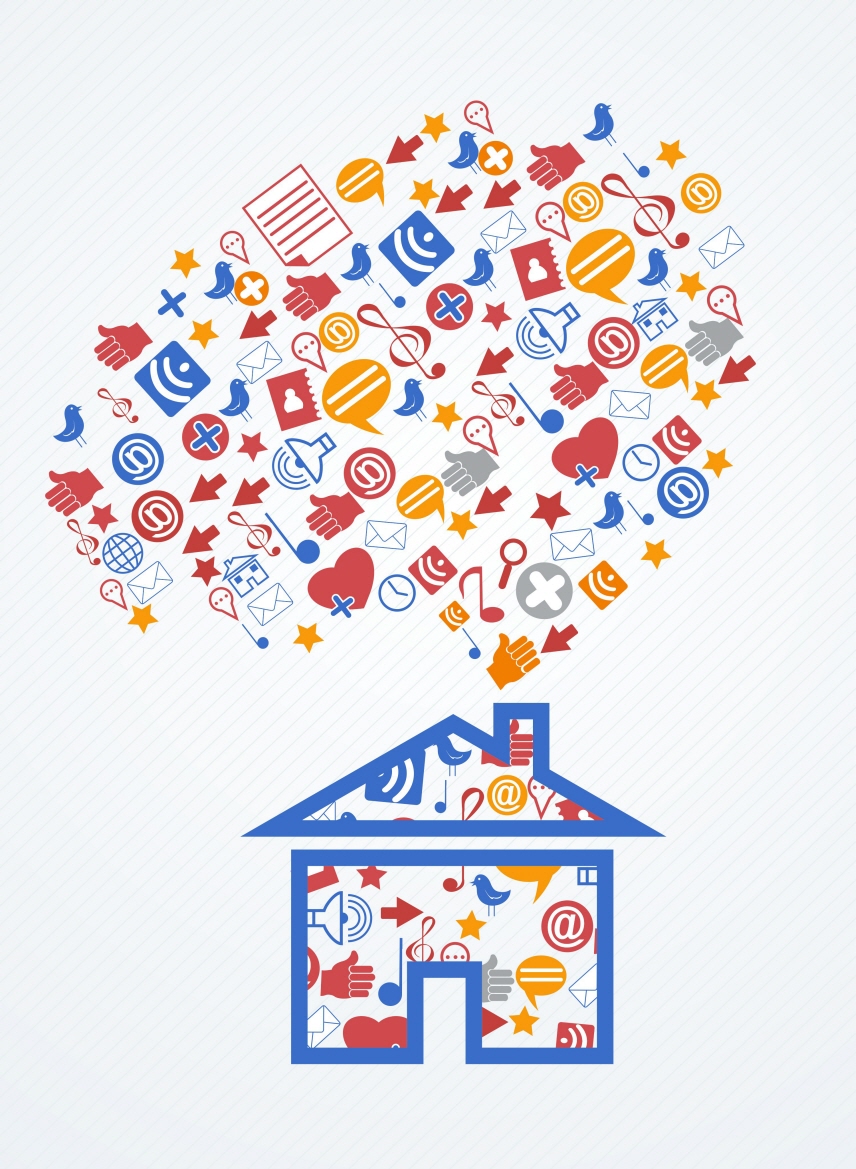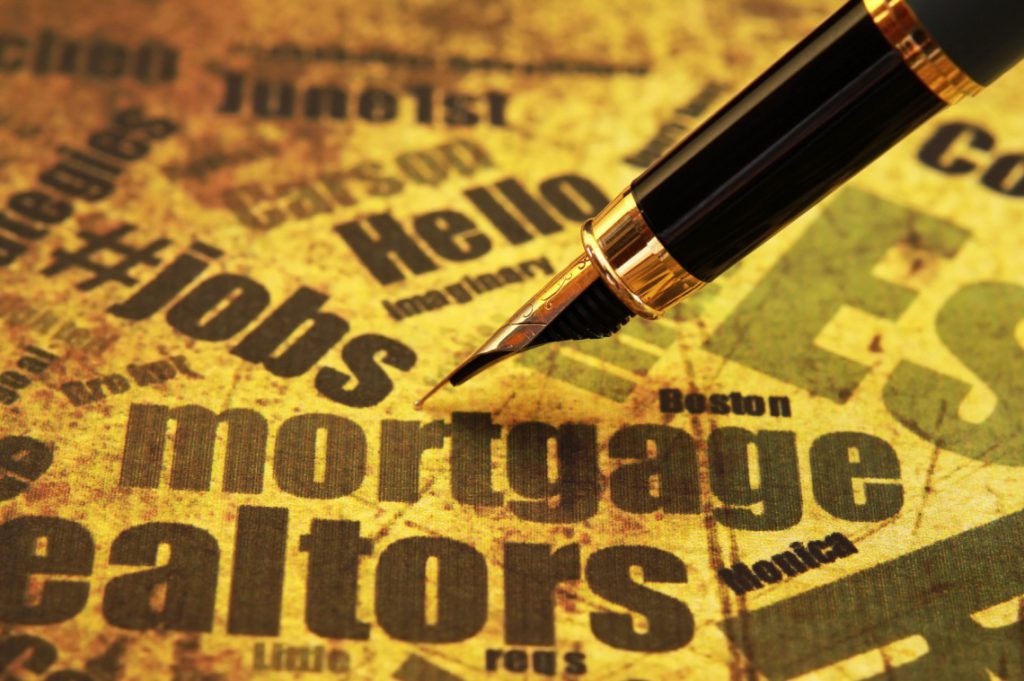
Understanding the basics of a home’s component parts has always been in the real estate agent’s wheelhouse. As internet-connected technologies become part of the package, don’t fall behind the curve.
For the last century, homebuilders and manufacturers have been envisioning ways to make homes smarter, more efficient, and more maintenance-free. But as the Internet of Things (IoT) meets up with smartphone-wielding buyers, the buzz about smart homes is becoming deafening. How do you keep up without getting bogged down in hype? Keep your focus on three things—the definition, the devices, and the data—and on how each of those is changing the home and the transaction.
THE DEFINITION: What is a smart home?
The term “smart house” was coined in the 1980s by the National Association of Home Builders to refer to a home with integrated telephones, lighting, audio, and security. Such systems required special wiring and typically cost tens of thousands of dollars. But the concept has evolved with the proliferation of inexpensive devices that can be operated via smartphone and can make data accessible online. Now, one real estate franchise is trying to bring about some common understanding of what it means to call a house a smart home.
In May, Coldwell Banker Real Estate LLC joined forces with consumer technology news source CNet to define a smart home as “equipped with network-connected products . . . connected via Wi-Fi, Bluetooth, or similar protocols for controlling, automating and optimizing functions” of the home. Their definition stipulates that the home has internet access, a smart security or temperature system, and at least two other smart features, such as appliances, entertainment devices, heating or cooling equipment, lighting, landscaping elements, air quality monitors, or thermostats.
Danny Hertzberg works on the front lines of smart-home living: the luxury market, where such features have moved “from an impressive amenity to an expected element,” he says. Hertzberg, a sales associate with Coldwell Banker Residential Brokerage in Miami Beach, Fla., and a member of real estate team The Jills, says his franchise’s effort to define a “smart home” is an important step toward eliminating casual or misleading uses of the term.
“It’s false advertising to have a Nest [thermostat] and call it a smart home. You can’t call the whole property a smart home or a smart condo and just have one element,” he says. “We need a nationwide consensus on the marketing terms. Otherwise people will be disappointed.” Or worse, they’ll feel duped.
THE DEVICES: What’s happening in smart-home technology?
In the high-end Miami market where Hertzberg works, he’s noticed home owners who are thinking about listing their homes are proactively installing smart-home systems, believing they’ll be at a disadvantage without them.
And with builders now installing smart devices in new construction, it’s only a matter of time before the trend reaches older homes and lower-priced listings, with sellers positioning these devices as points of differentiation. It helps that many smart-home devices can be had for a nominal cost—a few hundred dollars or less. Among the low-cost offerings are the Belkin WeMo switch, which plugs into an outlet and enables you to control lighting through a smartphone or motion sensor; the Amazon Echo, an interactive speaker that lets you use voice commands to access music, news, and more; and, of course, the Nest thermostat, which offers access from your phone and promises to learn your heating and cooling preferences.
Products like Nest have built-in data sharing tools to help potential buyers see themselves in a home, says Matt Flegal, a spokesperson for Palo Alto, Calif.–based Nest. Buyers who are considering a listing with a Nest thermostat, for example, can see the current owner’s app dashboard or the monthly usage email Nest sends to home owners. Although utility companies now offer online access to energy usage information, Nest brings control and usage data together in one package. “It’s a simple thing to do to make a house show better,” Flegal says.
When you’re vying for a listing equipped with smart-home features, Hertzberg suggests having a discussion about which features will convey and how those features improve the current owners’ lifestyle. “Understand why they installed a feature and what they love about it,” he says. For example, maybe they always left the lights on, so smart lighting has been a money-saving solution. Or maybe they entertain frequently, and smart speakers have enhanced the experience.
“As good as you think you are at copywriting, the owners sometimes have these diamonds,” Hertzberg says.
Understanding how smart technology works can make a difference. Hertzberg has seen the unfortunate result of showings where colleagues failed to learn how a system works. “The listing agent comes into the home and doesn’t know how to operate the system,” he says, adding that it’s a real turnoff for buyers. “Even to turn the lights on, they have to call somebody.”
The best way to get to know smart-home technology? Install it at home, Hertzberg suggests.
THE DATA:What’s the value of all that data collection?
One attraction of Wi-Fi–connected thermostats is that they enable home owners to track and optimize their energy usage. That data, combined with other available information, can be a boon for real estate agents.
For first-time buyers, in particular, the cost of ownership isn’t always readily apparent. “Energy costs are often the largest cost for the consumer after the mortgage,” says Hunter Albright, senior vice president of new markets for Tendril, a company with offices in Colorado and Western Europe that aggregates smart home technology data for consumers and real estate professionals. Tendril gathers around 300 data points about a property, most from publicly available sources and provides a system for helping consumers optimize their homes to be more energy–efficient. “It’s just more education for the home buyer,” says Albright. “It’s giving people a richer picture of that home.”
“Before a client is a home owner, you can use the [Tendril] tool to get an average of the energy costs,” says Ryan Carter, managing broker of 8z Real Estate in Denver. With tweaks based on possible upgrades and the potential owner’s energy needs, “the system can offer an idea of what a buyer might be looking at.”
Tendril sends 8z’s past clients a bimonthly email about energy efficiency and upgrade ideas. The email offers practical information, such as what makes a home suitable for solar panels or how an energy upgrade may pay off over time. The emails aren’t meant to replace brokers’ contact management systems but to augment them, Albright says. The personalized communications aim to show consumers that they made a smart decision.
Another company working to simplify home owners’ energy decisions is HomeSelfe, a division of Long Beach, Calif.–based Energy DataMetrics. The company’s home energy assessment app walks owners through their home for a snapshot of their home’s energy consumption. “Our free mobile app has you answer a few simple questions about your home and then sends an instant report that provides a picture of your home’s energy use and a personalized path to lowering utility bills,” says cofounder Ameeta Jain. HomeSelfe is one of eight companies currently in the National Association of REALTORS®’ REach accelerator program (narreach.com), which provides mentorship, education, and exposure for companies innovating in the real estate space.
Autopopulating Listings
For now, the data being collected by smart-home devices isn’t being curated for use in listing information. Although many MLSs have fields where listing agents can add information about energy savings, they’re not set up to feed in information from smart-home devices—yet. Chad Curry, managing director of NAR’s Center for REALTOR® Technology, says it’s just a matter of time. The Center recently established CRT Labs to help REALTORS® understand and have a voice in the development of smart-home technology.
Organized real estate’s role isn’t yet certain. But CRT’s participation in the U.S. Department of Energy’s Home Energy Information Exchange Accelerator is one cause for optimism. The accelerator is a three-year collaboration between the public and private sectors, with the goal of making home energy information more accessible. “With what we’re doing and the way we’re seeing MLSs respond, I think we’ll have this in two to three years,” Curry says. “Our vision is that none of this stuff would be entered by the real estate professional. It would be automatically updated by the house, and we think that’s possible.”
The Caveats
Will all this new data open up a host of new disclosure concerns? Yes and no. Say sellers have a moisture-sensitive smart device on their basement floor to measure water levels. It could give them hard data about the precise amounts of dampness and flooding that might have happened over the course of their ownership. But NAR Associate General Counsel Ralph Holmen points out that the greater availability of data won’t alter the basic calculation about disclosures. “These devices don’t really change the approach,” he says. The responsibility of the listing agent is the same; if you know it, disclose it.
But Holmen notes that brokers and agents must understand the data being collected. “The broker has an obligation to find out more about what the data shows and what that means for buyers,” he says. “He can’t turn a blind eye to things that might be a problem, even if the owner doesn’t say there’s been flooding.”
Privacy is another major concern. There have already been headlines about smart-home devices exposing private information about unwitting home owners. Some may worry that simple data, such as when electricity is being used, could help thieves determine when a home might be empty and vulnerable. Curry acknowledges these issues and notes that NAR is working with Underwriters Laboratories’ Cyber Security Assurance Program to address software weaknesses and review security controls.
Home owners who are reluctant to share energy and environmental data and other information about their home may soften over time as they see the convenience provided by these devices. “Rather than thinking of it as something you’ll have to disclose,” Curry says, “think of it as a way to improve owners’ quality of life.”





















